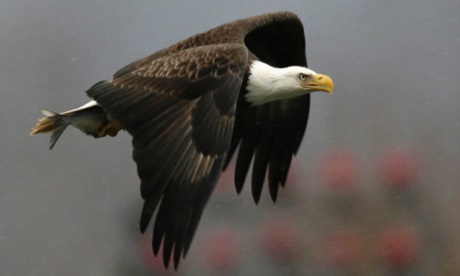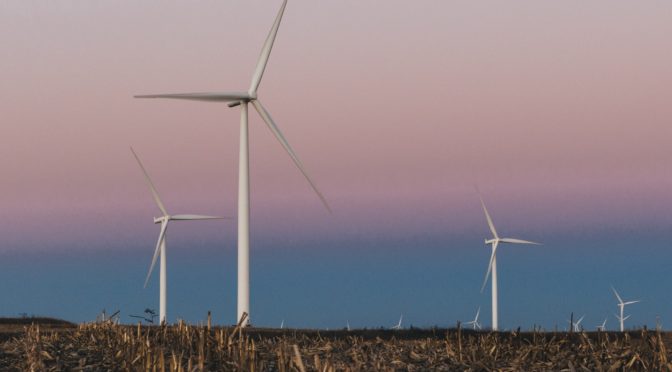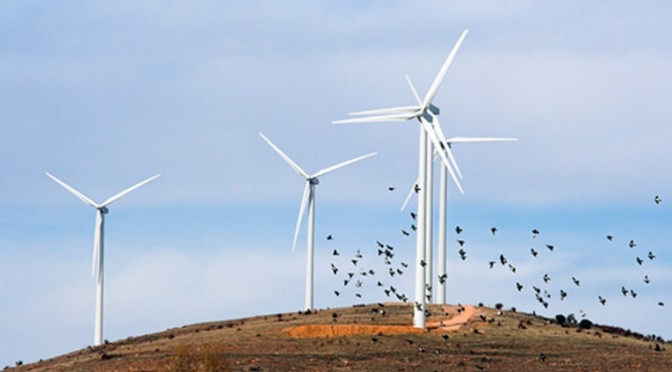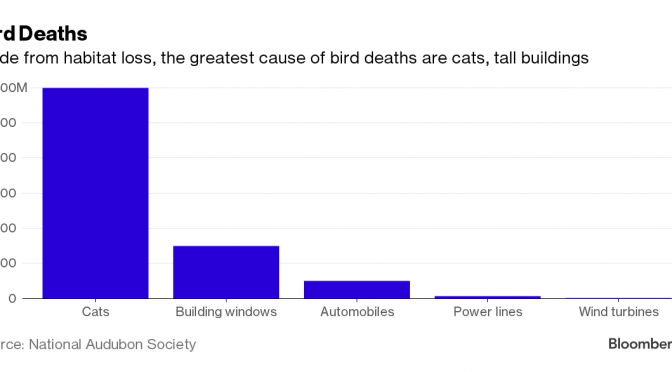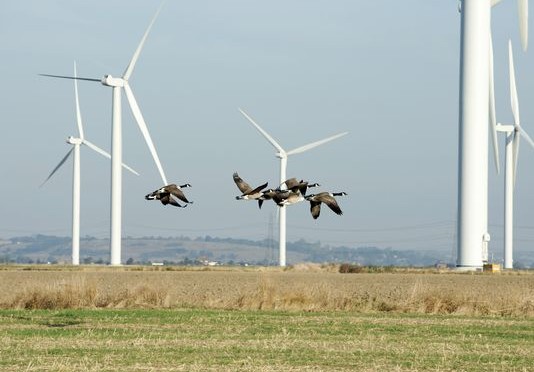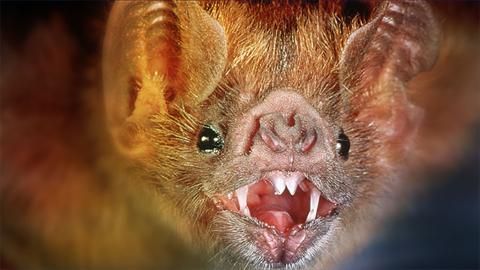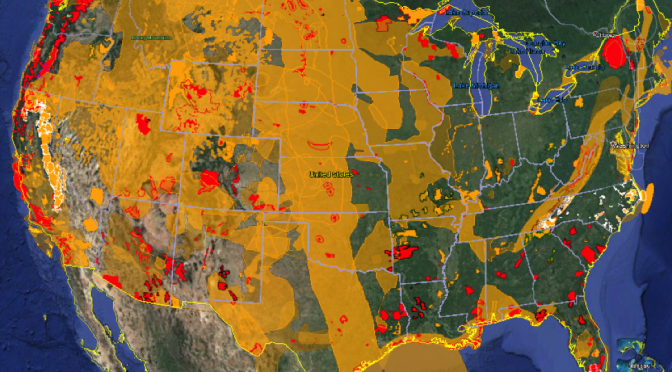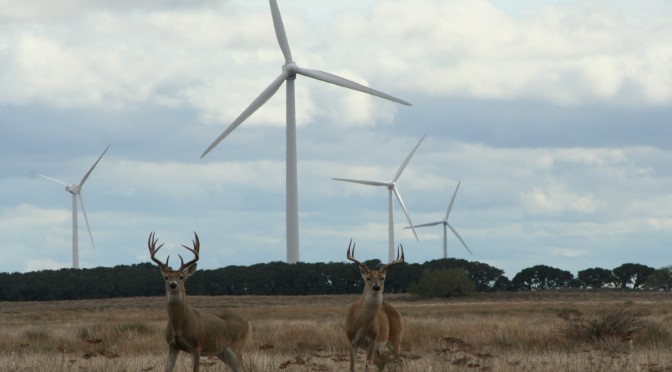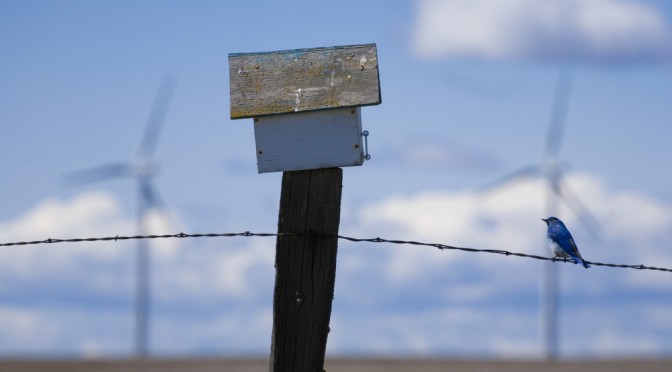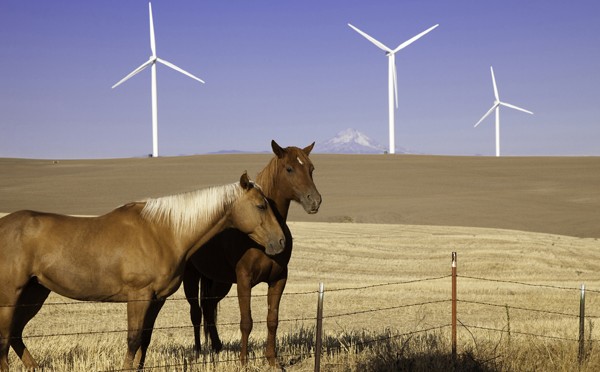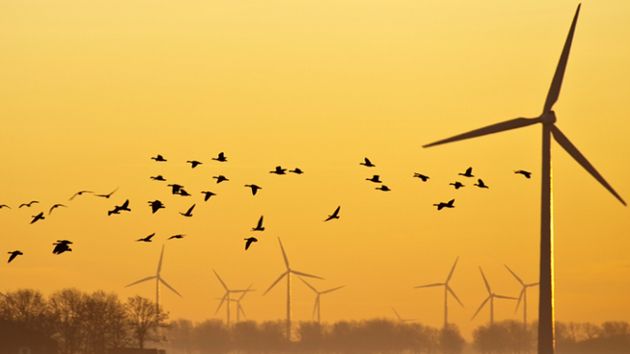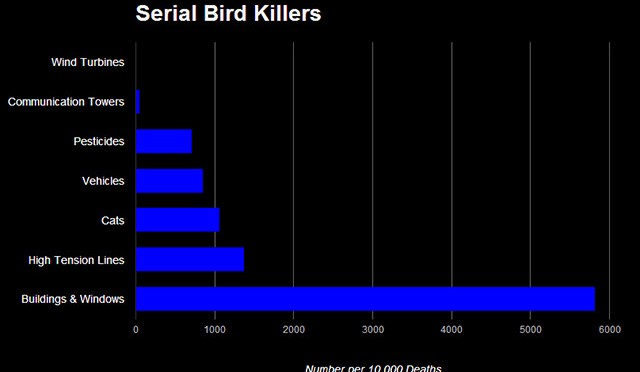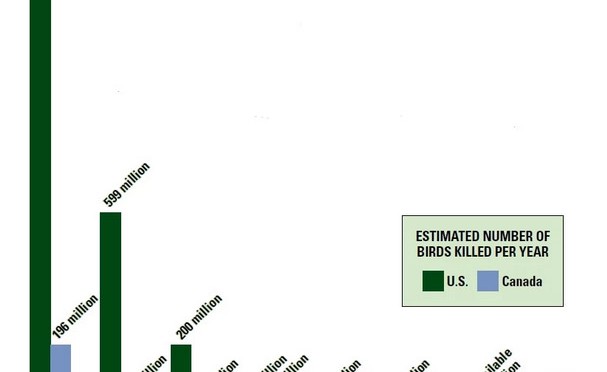The U.S. Fish and Wildlife Service (USFWS) has released new data that should ease the minds of those concerned about wind energy’s potential impacts on golden eagles—it confirms impacts remain small. Causes of eagle mortality USFWS studied causes of mortality of satellite tagged North American golden eagles from 1997 to 2013. Researchers then extrapolated their … Continue reading Wind’s golden eagle impacts remain low
Continue readingTag Archives: birds
Wind power and wildlife thrive together
National Bird Day is today and it offers a good chance to share the positive story about wind energy and birds. Cleaner air, healthier habitats What do some of America’s most respected conservation groups think about wind power? “Audubon strongly supports properly sited wind power as a renewable energy source that helps reduce the threats … Continue reading Wind power and wildlife thrive together
Continue readingWind energy is better for birds in the long run
The U.S. Fish and Wildlife Service has been criticized for granting 30-year wind farm permits that could lead to the deaths of thousands of eagles. Although the National Audubon Society is among the organizations objecting to the length of these permits, it may surprise some to know that Audubon “strongly supports properly sited wind power” … Continue reading Wind energy is better for birds in the long run
Continue readingTop 5 reasons to question campaign rhetoric about wind energy
Candidate Donald Trump spoke to former candidate Herman Cain about wind power yesterday on Cain’s radio show. The result was a series of campaign trail statements that “cited bad information that’s out-of-date, discredited, misleading, and just plain wrong,” as we said the last time this came up. We’ve rounded up the top 5 facts that can better … Continue reading Top 5 reasons to question campaign rhetoric about wind energy
Continue readingWind power and eagles can successfully coexist
As one of the leading solutions to combat carbon pollution, growing wind energy is an effective way to protect America’s landscapes and wildlife. Scientists agree that climate change is the greatest threat to our nation’s plants and animals, and zero-carbon energy sources will play a critical role in ensuring these populations remain healthy and abundant. … Continue reading Wind power and eagles can successfully coexist
Continue readingWind energy helps protect wildlife by reducing carbon pollution
Scientists overwhelmingly agree that climate change poses the largest threat to many of the planet’s wildlife populations, and since wind power is the biggest, fastest, cheapest way to cut harmful carbon pollution, it remains one of the most effective ways to protect them. That includes bats. While there are many significant human-caused threats to bats, … Continue reading Wind energy helps protect wildlife by reducing carbon pollution
Continue readingU.S. Fish and Wildlife Service clarifies proposed rule
This week the U.S. Fish and Wildlife Service (USFWS) proposed a new rule concerning its eagle conservation program. While the proposal would govern a number of different industries, some have reported the facts incorrectly and erroneously conflated it with wind energy. As a clean energy source, wind energy contributes to eagle conservation by mitigating climate … Continue reading U.S. Fish and Wildlife Service clarifies proposed rule
Continue readingEagles are making wind turbines safer for birds
This article originally appeared on Energy.gov. Kelly Yaker is a Web Project Manager at the National Renewable Energy Laboratory. A bald eagle named Spirit and a golden eagle named Nova are helping researchers make wind energy safer for birds. The National Renewable Energy Laboratory (NREL), one of the Department of Energy’s 17 National Laboratories, partnered … Continue reading Eagles are making wind turbines safer for birds
Continue readingAmerican wind power’s Legacy of Care highlighted by AWEA’s John Anderson
Anderson: Hey Austin, love bats? So does wind power Austin has a rich heritage of celebrating bats, and the city has been called one of the best places in the world to watch them. Friday is National Wildlife Day, so there’s no better time to talk about the importance of protecting and preserving our flying … Continue reading American wind power’s Legacy of Care highlighted by AWEA’s John Anderson
Continue readingWind energy industry announces new voluntary practices to reduce overall impacts on bats by 30 percent
The U.S. wind energy industry announced, on the eve of National Wildlife Day, a best management practice establishing a new voluntary operating protocol, which is expected to reduce impacts to bats from operating wind turbines by as much as 30 percent. The agreement, developed by the American Wind Energy Association (AWEA) with the initial … Continue reading Wind energy industry announces new voluntary practices to reduce overall impacts on bats by 30 percent
Continue readingAmerican Bird Conservancy overlooks how wind energy protects wildlife
The American Bird Conservancy is suggesting blocking off the majority of the US (yellow and red areas) to wind energy development, which is incompatible with scaling up wind power enough to address climate change — the biggest threat that wildlife will face this century. A flawed report by the American Bird Conservancy suggests blocking off … Continue reading American Bird Conservancy overlooks how wind energy protects wildlife
Continue readingConservationists see wind energy’s benefits
A recent anti-wind energy opinion piece on birds overlooked that climate change is the greatest threat to birds and other wildlife, and that wind energy is one of the most affordable, effective and widely available ways to reduce carbon pollution and help mitigate the impacts of climate change. We all consume energy and it has … Continue reading Conservationists see wind energy’s benefits
Continue readingImpacts of onshore wind energy development on birds and bats
USGS has released a preliminary methodology to assess the population level impacts of onshore wind energy development on birds and bats. This wind energy impacts assessment methodology is the first of its kind, evaluating national to regional scale impacts of those bats and birds that breed in and migrate through the United States. The methodology … Continue reading Impacts of onshore wind energy development on birds and bats
Continue readingWind energy industry has legacy of caring for wildlife
The recent headline, “Glass architecture killing millions of migratory birds” set off quite an internal debate within our organization – but not for the reasons you might expect. You see, we’ve battled for years in the wind industry to get to a place where any public discussion about protecting birds begins with the science to … Continue reading Wind energy industry has legacy of caring for wildlife
Continue readingIberdrola Renewables Seeks Applicants for Wildlife Grants
Iberdrola Renewables today announced it is seeking applicants for its 2015 Wildlife Protection Program (WPP) grants. The company’s ongoing “Legacy of Caring” campaign for wildlife and habitat awards WPP grants to avian rehabilitation groups. These partners play an important role in rehabilitation, community education and scientific understanding of birds of prey. Recipients in 2014 included … Continue reading Iberdrola Renewables Seeks Applicants for Wildlife Grants
Continue readingWind turbines aims to limit harm to birds
The threat posed to birds by wind turbines has long been debated. A wind farm being built off Finland’s west coast will feature a new system designed to limit the danger — potentially setting a new standard for future wind power facilities in the country. The 11-turbine maritime wind farm to open next summer on Tahkoluoto Island … Continue reading Wind turbines aims to limit harm to birds
Continue readingBirds and wind energy
I write to clear up mischaracterizations made by a commentary published online in the PG’s PowerSource section (“Linowes: Bird Mortality: Big Wind on the Defense,” Oct. 22) regarding a recently published study on bird mortality at wind energy facilities. The study in question was published in the peer-reviewed scientific journal PLOS ONE and was conducted … Continue reading Birds and wind energy
Continue readingWind Turbines Kill Around 300,000 Birds Annually, House Cats Around 3,000,000,000
Wind turbines kill between 214,000 and 368,000 birds annually — a small fraction compared with the estimated 6.8 million fatalities from collisions with cell and radio towers and the 1.4 billion to 3.7 billion deaths from cats, according to the peer-reviewed study by two federal scientists and the environmental consulting firm West Inc. “We estimate that on … Continue reading Wind Turbines Kill Around 300,000 Birds Annually, House Cats Around 3,000,000,000
Continue readingBirds Collision with Wind Turbines at Wind Energy Facilities
Small passerines, sometimes referred to as perching birds or songbirds, are the most abundant bird group in the United States (US) and Canada, and the most common among bird fatalities caused by collision with turbines at wind energy facilities. We used data compiled from 116 studies conducted in the US and Canada to estimate the … Continue reading Birds Collision with Wind Turbines at Wind Energy Facilities
Continue readingWind turbines kill fewer birds than do cats, cell towers
Wind turbines kill far fewer birds in North America than do cats or collisions with cell towers, says a study out Monday. As wind power expands in the United States, critics often blame giant turbine blades for bird deaths. What’s billed as the most comprehensive analysis ever of these fatalities says birds face far greater … Continue reading Wind turbines kill fewer birds than do cats, cell towers
Continue reading